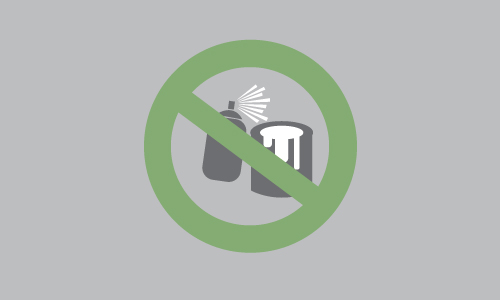The paint industry has continued to become more and more centralized. With no more than a few hundred players globally, the power is becoming centralized at the top—and according to the Wall Street Journal, more consolidation may be on the horizon. With industry consolidation comes intense focus by regulators, investors, and members of the press, creating an environment where one slip-up could become a PR or investor nightmare. Today, we would like to explore the current state of consolidation in coatings, and discuss why it pays to be proactive in your pollution control activities.
A History of Consolidation in the Paint Industry
In 1969, there were more than 1,100 paint manufacturers in the United States, each meeting the needs of local markets and operating relatively unregulated. Over time, these entities folded, merged, or were acquired.
The EPA, Clean Air Act, and Stagflation Pushes Consolidation
Throughout the 1970s, an increasingly strict regulatory environment combined with economic pressures, material shortages, and reporting challenges that made it hard to be a local or regional player in the paint market. Smaller companies were routinely challenged by suppliers who, facing market pressures of their own, had to implement price at shipment pricing, which drove costs highest for small manufacturers.
These costs were more easily absorbed by larger manufacturers who could use leverage to make purchasing easier, whose formula changes affect hundreds of thousands of gallons, and whose cost of reporting could be spread across these massive outputs.
Over the past five decades, the number of paint manufacturers has whittled down to a couple hundred globally, led by 10 key players.
Consolidation Creates Excitement, Excitement Creates Press
Consolidation is nothing new, but often, consolidation brings additional attention from not only industry insiders, but from regulators, members of the press, and watchdogs. Take a look at healthcare, an industry that’s rife with disruption and M&A activity. Do you think that outsiders will give CVS a little more attention during and after their acquisition of Aetna?
The same goes for the paint industry. There’s money to be made in breaking a story, and a relatively innocuous violation of an EPA regulation could go from “EPA Press Release” to the front page of every newspaper, environmental blog, and class action lawyer’s website. Additionally, in today’s hyperpartisan environmental reporting world, EPA/CAA noncompliance by an industry giant could easily be spun into a PR nightmare on par with the DuPont chemical leak.
Why Paint Manufacturers Need to Be Proactive Regarding Pollution Control
With the press that will come about as a result of increased consolidation in the paint industry, it pays to ensure that appropriate pollution control measures are taken now to prevent the potential PR nightmare that could take place during or after a merger.
Knowing this, the last time that many paint manufacturers have thought hard about their VOC abatement solution was either the last time their oxidizer needed maintenance, or worse, the last effective date of the Clean Air Amendments. Too often, companies install an oxidizer and think “that’s all.” Unfortunately, as VOC Abatement technology ages, it becomes less and less efficient, while becoming more likely to experience costly, business-disrupting downtime.
If your VOC abatement solution is pushing or has exceeded 20 or even 30 years of existence, it’s not only inefficient (costly) by today’s standards, it’s risky to your reputation, your compliance efforts, and the environment. With this in mind, we invite you to learn more about emission control in the paint industry here, and welcome you to download our latest guide to VOC Abatement and Pollution Control, which you can preview below.
Throughout the years, The CMM Group has worked with paint manufacturers to analyze emissions, design solutions, and implement compliant and efficient technology. We invite you to read our paint industry case studies and contact us for more information.




